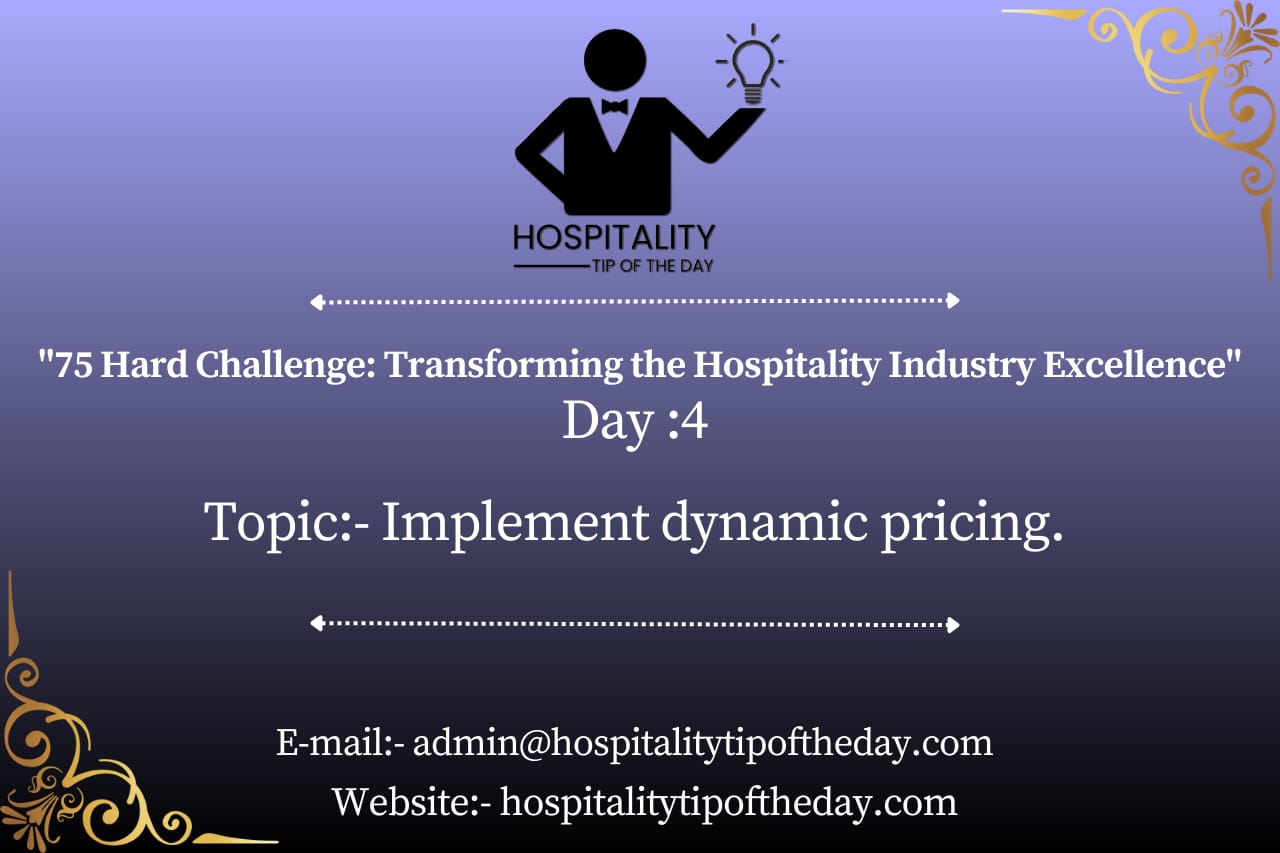
The Hospitality industry has witnessed a seismic shift in recent years, driven by changing consumer behaviors and the advent of technology. One of the most impactful strategies to emerge is dynamic pricing. By dynamically adjusting room rates based on real-time factors, hotels can optimize revenue, enhance guest satisfaction, and stay competitive in a rapidly evolving landscape.
The Power of Dynamic Pricing
Dynamic pricing is not a one-size-fits-all approach but a dynamic algorithmic strategy that considers various factors in real-time to set the optimal price for a hotel room. Here’s how it can revolutionize your hospitality business:
1. Demand-Based Pricing:
Dynamic pricing takes into account demand fluctuations. During peak seasons or high-demand periods, room rates can be adjusted upward, maximizing revenue. Conversely, during low-demand times, rates can be lowered to attract more guests.
2. Real-Time Data Utilization:
With access to vast amounts of data, hotels can analyze factors like booking pace, competitor rates, local events, and historical data to make informed pricing decisions. This real-time data utilization ensures that room rates stay competitive and relevant.
3. Enhanced Revenue Management:
Dynamic pricing allows for granular control over room rates, allowing hoteliers to optimize revenue for each room type and channel. This means better revenue management and maximized profits.
4. Personalization:
Personalized pricing can be implemented, offering different rates to different guests based on their preferences, loyalty status, or booking history. This tailored approach can boost direct bookings and guest loyalty.
5. Stay Competitive:
In today’s market, price transparency is paramount. Dynamic pricing helps hotels remain competitive by adjusting rates to match or beat competitors in real time, preventing revenue loss due to undercutting.
Implementing Dynamic Pricing
To successfully implement dynamic pricing in the hospitality industry, consider these steps:
1. Choose the Right Technology:
Invest in a robust revenue management system or pricing software that can handle complex data analysis and automate rate adjustments.
2. Data Integration:
Ensure seamless integration with your property management system (PMS) and other data sources to access real-time information.
3. Define Pricing Rules:
Establish clear pricing rules and strategies based on demand, booking patterns, and your hotel’s unique characteristics.
4. Monitor and Adjust:
Regularly monitor the performance of your dynamic pricing strategy and make adjustments as needed. Stay agile and adaptable.
5. Staff Training:
Train your staff to understand the dynamic pricing strategy and its benefits. A revenue-focused culture is crucial for success.75
Conclusion
Dynamic pricing is not just a trend; it’s a necessity in the modern hospitality landscape. It empowers hotels to maximize revenue, stay competitive, and provide personalized experiences to guests. By embracing dynamic pricing and leveraging technology, the hospitality industry can unlock its profit potential and thrive in an ever-evolving market. Stay ahead of the curve and watch your hotel’s success soar with dynamic pricing.







